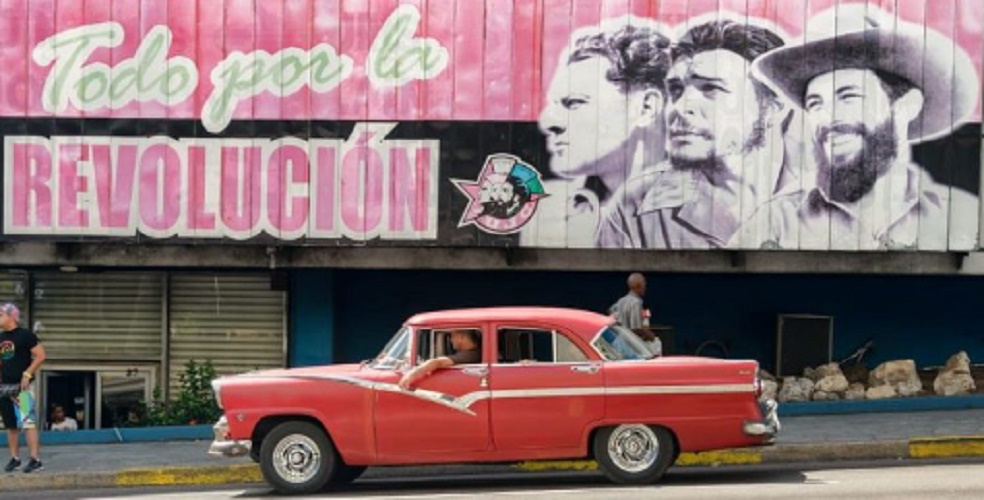What was the Cuban Revolution?
We explain what the Cuban Revolution was, who were part of it and its events. In addition, its causes and consequences.
-
What was the Cuban Revolution?
The Cuban Revolution is known as the uprising in arms of the Cuban revolutionary movement , the leftist guerrilla army led by Fidel Castro Ruz, against the dictatorial regime of Fulgencio Batista, who ruled the destinies of the Caribbean island since 1952.
This uprising began on July 26, 1953, when a group of Castro-led youths detached themselves from the Cuban People’s Party and undertook the armed struggle against Batista, calling themselves “Centennial Generation”, and tried to take the Moncada Barracks in Santiago of Cuba and the Carlos Manuel de Céspedes Barracks in Bayamo, failing in the attempt and being arrested and prosecuted by the dictatorship.
Castro and his followers would be amnestied in 1955 thanks to international pressure, after paying 22 months in jail, and founded the 26 de Julio Movement (M-26-7), an anti-imperialist and democratic organization, based on the ideas of José Martí.
Then they went to Mexico and formed a revolutionary army with which to overthrow Batista , an objective they undertook on November 25, 1956, disembarking in Cuba and entering the Sierra Maestra in the east of the country.
Under the command of the Guerrilla Army, Fidel Castro, Ernesto “Che” Guevara and Camilo Cienfuegos and Juan Almeida, enjoyed enormous world sympathies in the context of the Cold War between the United States and the Soviet Union, as they began their struggle of almost 3 years to overthrow the dictatorship .
On January 1, 1959, guerrilla troops took Havana and Santiago, establishing a provisional and diverse government, at the hands of magistrate Manuel Urrutia Lleó in the presidency and with Fidel Castro as Commander of the Army. This government was recognized by the United States and meant the end of the Batista dictatorship.
The Revolution in power
Despite the revolutionary commitment to new free elections as soon as they came to power, as announced in the “Manifesto of the Sierra Maestra”, once in power it was decided not to hold elections until 1974.
Once the Cuban communist regime has been declared, the elections have been repeated periodically, but through an indirect system at the hands of the State Council chaired by Fidel Castro, president of Cuba from then until 2008, succeeding him in office Brother Raul
The communist regime had the help and alliance of the Soviet Union ( USSR ) and was sanctioned and economically blocked by the United States since the 1960s, after several attempts to invade the island failed, one from the Dominican Republic of Leonidas Trujillo and another from the US itself, in the famous Bay of Pigs.
At that time, the USSR’s attempt to install a set of nuclear warheads in Cuba to threaten its American rivals gave rise to a global crisis known as the Missile Crisis in Cuba (“Caribbean Crisis” for Russia and “Crisis de Octubre ”for Cuba), and that is considered one of the highest points of the entire Cold War conflict.
After the fall of the USSR in 1991, this led Communist Cuba to a time of unparalleled famine and misery that was called the “Special Period” and that motivated the desperate escape of numerous impoverished Cubans, throwing themselves into the water in homemade boats to Go to North American territory.
The Cuban Revolution is considered an important event on a continental and global level , still a symbol of the anti-imperialist struggles of Latin America and the Third World, as well as of the revolutionary left and the leftist commitment to the armed struggle.
-
Causes of the Cuban Revolution
The main causes of the Cuban Revolution can be summarized in:
- The worldwide influence of the October Revolution of 1917, in which the Russian proletariat deposed the tsars and initiated a revolutionary government. The same happened with the Revolution in Guatemala in 1944.
- The coup d’etat of Fulgencio Batista against the legitimately elected government of Carlos Prío Socarrás, which caused a deep malaise in the population.
- The US dependency that maintained the Batista military dictatorship in Cuba, while the Cuban people suffered unemployment and widespread corruption .
-
Effects of the Cuban Revolution

For its part, the main consequences of the Cuban Revolution can be summarized in:
- The fall of the Batista dictatorship and the beginning of the period of revolutionary reforms and nationalizations in Cuba, which affected banking, the sugar industries and that ultimately caused a massive exodus of the Cuban middle class.
- Breakdown of relations between the US and Cuba (1961) and economic and commercial blockade of the former towards the Caribbean island, which will become financially dependent on the Soviet Union until its collapse in the early 1990s.
- Beginning of the Cuban communist regime that still governs this nation, and that the rejection of the Latin American intelligentsia that initially supported them would quickly be won, due to its authoritarian policies (executions, summary trials, persecution of opponents, homosexuals and artists, exit ban of the island, etc.).
- The Cuban Revolution exerted an enormous influence on other revolutionary leftist movements throughout Latin America, which also led to the emergence of guerrillas and insurrectional movements that were answered by the US through the financing of bloody anti-communist dictatorships such as Pinochetism ( Chile) or the National Reorganization Process (Argentina).




